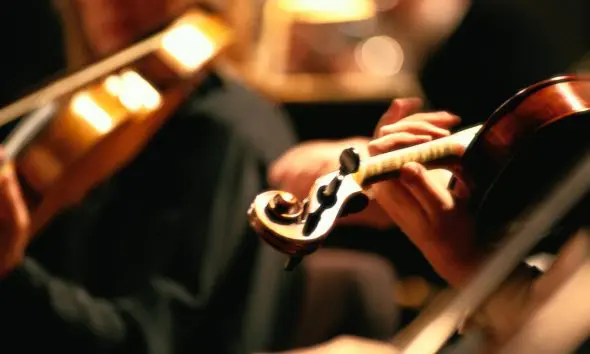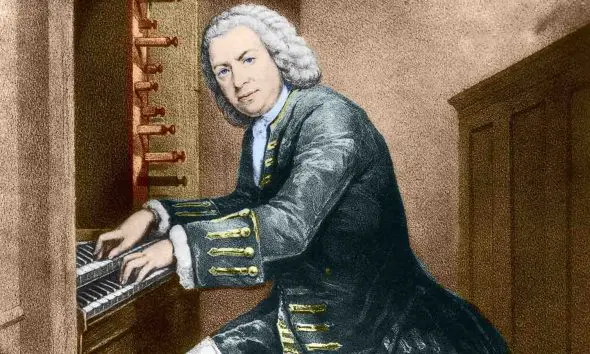reDiscover Tchaikovsky’s ‘Nutcracker Suite’
Discover the story behind Tchaikovsky’s ‘The Nutcracker Suite’ – a selection of 8 musical highlights from ‘The Nutcracker.’

From the candy-sweet ‘Sugar Plum Fairy’ to the glittering ‘Dance of the Reed Flutes,’ Tchaikovsky’s Nutcracker Suite is the musical epitome of sugar, snow, and sparkle. Our guide to Tchaikovsky’s Christmas classic delves into the work’s history and reveals why Christmas just wouldn’t be the same without it.
Why the name?
The Nutcracker Suite is a sparkly little box of jewels made up of highlights from Tchaikovsky’s fairy tale ballet The Nutcracker, which has become a Christmas staple around the world: conductor Simon Rattle calls it “one of the great miracles in music.” The ballet’s title comes from a story, The Nutcracker And The Mouse King, written in 1814 by the German fantasy writer ETA Hoffmann.
After the pair had worked together on The Sleeping Beauty, the choreographer Marius Petipa worked with Tchaikovsky to write the music for a new scenario he had chosen and written out, based on a version by Alexandre Dumas of Hoffmann’s story. Petipa instructed Tchaikovsky down to the last detail, including the tempo and the number of bars in each section.
The Nutcracker, a fairy tale ballet in two acts, is centered around a young girl’s Christmas Eve celebration and romantic awakening. She creeps downstairs to play with her favorite present, a nutcracker, which comes to life as a handsome prince who whisks her off to the Land of Sweets. The ballet was first performed on 18 December 1892 at the Mariinsky Theatre in St Petersburg, Russia.
Tchaikovsky made a selection of eight musical highlights from The Nutcracker before the ballet’s premiere, forming The Nutcracker Suite, which was performed for the first time on 7 March 1892 in St Petersburg. The Nutcracker Suite became instantly popular and was featured in Disney’s Fantasia.
Need to know
What has always struck people about Tchaikovsky’s Nutcracker Suite is the astonishing sounds the composer gets from the orchestra – he brings the toys and sweets to life in music that somehow sounds like glittering cut-glass, crystallized ginger, and spun sugar. One innovation was Tchaikovsky’s use of the celesta, the instrument you hear in the ‘Dance of the Sugar-Plum Fairy’ (Petipa said he wanted this dance to sound “like drops of water shooting from a fountain”). The celesta is a keyboard instrument whose hammers hit metal plates, sounding similar to but softer than a glockenspiel; Tchaikovsky had heard one in Paris in 1891 and asked his publisher to buy one, hoping to keep it a secret so that no other Russian would compose music for the instrument before him.
Watch the new video for ‘Dance of the Sugar Plum Fairy’
Watch the new video for ‘Dance of the Sugar Plum Fairy’ inspired by classic holiday stories for children, including The Nutcracker and A Visit From St. Nicholas (also known as The Night Before Christmas), in which “The children were nestled all snug in their beds, While visions of sugarplums danced in their heads.” The video, created by Tibetan-American artist Tenzin Yougyal, follows a young boy named Leo (after Mstislav Leopoldovich Rostropovich), and a magical fairy as they travel through their dreams on the night before Christmas. During their wonderful adventure, they encounter the secret, joyful home of the dancing Sugar Plums.
Tchaikovsky’s Nutcracker Suite begins with an ‘Overture’ and ‘March’ before moving into dances from Act 2 of the ballet, which is set in the Land of Sweets. After the ‘Sugar Plum Fairy’s’ dance, we have ‘Russian,’ ‘Arabian,’ ‘Chinese,’ and ‘Reed Flute’ dances – though the ‘Arabian’ one (which Rattle calls “absolutely heartbreaking – how the strings and oboe and cor anglais sing out over it”) is actually based on a Georgian cradle song. The Nutcracker Suite concludes with the famous ‘Waltz Of The Flowers’ evoking elegance and grandeur.
Most of the dances have a couple of ‘verses’ that use the same tune, just orchestrated differently. Notice how Tchaikovsky keeps the sound crystalline and transparent when he uses the whole orchestra, as when there are just a couple of flutes playing.
What’s a sugar plum?
Good question. It’s a little round or plum-shaped sweet with a hard sugar shell around a fruit, nut, seed, spice, or chocolate. They were popular from the 16th to 19th centuries, when the technical term was “dragée” or “comfit” (indeed, the French name for our fairy is “La Fée Dragée.” M&Ms are a clear descendant.
Where have I heard it before?
Anyone over a certain age will be unable to hear the ‘Dance of the Reed Pipes’ without thinking of Cadbury’s Fruit and Nut chocolate bars (the dance was featured in a couple of TV ads in the 1970s starring Frank Muir).
The ‘Dance of the Sugar Plum Fairy’ has also been used in Christmas TV ads for everything from Baileys to Barclaycard. And then there’s the lift music, ringtones, and maddening ‘on-hold’ money spinners; Tchaikovsky’s Nutcracker Suite is nothing if not ubiquitous. But as Rattle says, “Bring it on. It survives absolutely anything.”




